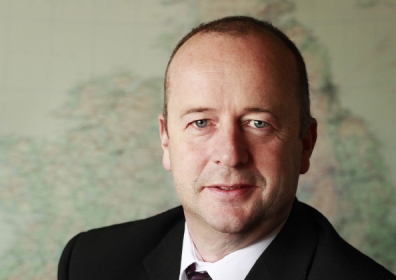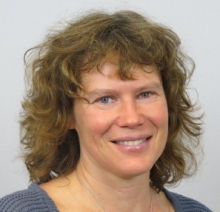Issue:
As the new full scale installation of the Ostara Pearl wastewater phosphate recovery comes on line in the Netherlands, water and wastewater treatment solution provider ACWA Services has positioned itself in the UK as the licensee for the technology. Keith Hayward spoke with Peter Brewer, the company’s general manager, about why it has made this move and the opportunities ahead for the technology.

The Pearl phosphate recovery technology of Canadian company Ostara is still new to Europe, with installations including a demonstration plant with the UK’s Thames Water and a new plant just on line at Amersfoort in the Netherlands. Interest in wastewater resource recovery is growing, and will continue to do so, and it is with this as a backdrop that contractor ACWA Services took on the UK license for providing the Pearl process at the end of last year.
‘The technology itself is an impressive technology,’ says Peter Brewer, general manager of ACWA Services. ‘It ticks a number of boxes in terms of taking what is essentially going into the waste stream and recovering that into a usable product.’
ACWA is aiming in particular at providing the technology to the regional sludge treatment centres of municipal wastewater operators. Ostara’s Pearl process offers a means of recovering phosphates in the form of magnesium ammonium phosphate, or struvite.
'As we talk about the circular economy and the reuse of waste materials, we are starting to see there is a cost effective way of doing that.’
Brewer notes that one reason the process was an attractive option to take on is that the final high purity struvite product, marketed as CrystalGreen, is usable without further processing, and is certified in the UK as a fertiliser product. ‘The Ostara technology removes phosphates directly into a usable product,’ he says.
‘Also what we like about the Ostara model is the business model they have come up with. They guarantee to purchase all the fertiliser produced in a separate off-take agreement,’ says Brewer. ‘The water companies are not left trying to sell this byproduct. Ostara take that headache off the hands of the water companies. It means they can concentrate on their core business, which is water and wastewater treatment.’
Struvite – a problem for digester operators
Addition of the Pearl option to the company’s portfolio also provides a fit with its other offerings, especially its Amtreat high-rate activated sludge process for treating high-strenagth ammonia wastewaters. ‘Amtreat removes high strength ammonia from the same place in the flowsheet,’ says Brewer. Both Amtreat and Pearl are aimed at treating the centrifuge centrate from processing of anaerobic digestion plant liquors. ‘We already have seven projects in the UK for removing the ammonia portion from that stream, so we are already used to working in those areas. This will be another step in that area,’ he adds.
The main aim of providing the technology is not specifically to help wastewater treatment plants meet any effluent phosphorus consent limit that is in place, although removal of the phosphorus load will help relieve the treatment burden in this respect, Brewer explains. ‘We will be removing 80% of the load from the wastewater treatment plant. This will make any other application for removal of phosphorus work better,’ he says.
At the same time, Brewer’s comments suggest that the current motivation for adding the process is likely to be as much about tackling an important operational issue for anaerobic digestion plant operators as it is about producing a new fertiliser product. ‘The other aspect [of the market] is improving the efficiency of the system in terms of operating costs: no uncontrolled struvite precipitation, which is very expensive for maintenance,’ he says, noting that alongside this the product produces a revenue stream.
Process prospects
So what are the prospects of take-up of the process in the UK? ‘We have made a number of presentations, and there is strong interest,’ says Brewer. Water company investment in England and Wales is based on five year asset management plan cycles, which are subject to regulatory approval. ‘How this fits into the AMP cycle spending is yet to be determined,’ he says. But given that a substantial part of the case for investment could be about reducing maintenance costs, could this mean installation would take place at sites requiring a significant overhaul because of their age, for example? ‘It could well do,’ comments Brewer.
Prospects will also be affected by wider thinking on phosphates at wastewater treatment plants. Chemical precipitation, especially with ferric salts, is often used where phosphorus specifically needs to be removed from effluents. The sludge stream from such plants is not then suitable for struvite recovery. At the same time, there are relatively few enhanced biological phosphorus removal plants in the UK, which are typically seen as providing the high orthophosphate levels suitable for struvite recovery. Brewer believes something else is going on. ‘Some of our potential clients are doing inadvertant bio-P removal,’ he says. ‘They say they are not doing biological nutrient removal for phosphorus, but we have shown them there is a big uptake of phosphate and that this is inadvertant bio-P. This is where some of them are having problems with struvite.’
This highlights that there is the potential to make greater use of a biological approach, rather than dosing with a ferric salt. This in turn raises questions such as whether it is economic to install digestion and phosphate recovery at smaller treatment plants. ‘What we are trying to do, and this is a much longer exercise, is to show clients that instead of adding ferric, producing a sludge that has limited value, they could use a bio-P process and remove the struvite in a controlled fashion as a fertiliser, which then has a value that you can sell separately,’ says Brewer. ‘There are a lot of plants that are using ferric. Whether they are big enough to benefit from the Ostara technology is something we are still trying to determine.’ It is understandable that operators see benefits of regional sludge centres, so it will be a task to convince them to make changes at the smaller treatment plants. ‘It is a much bigger education exercise,’ adds Brewer.
There is though cause for optimism. Brewer points to the growing number of Pearl installations in North America. ‘What they see is a growing trend now that the technology, but more importantly the business model, is being proven,’ he says. And now Europe is getting experience with the process. ‘Like a lot of new technologies and new business models, it takes a bit of time to get some traction. Once people start to see the benefits of it, and not just the financial benefits, and as we talk about the circular economy and the reuse of waste materials, we are starting to see there is a cost effective way of doing that.’
Keywords:
- UK, resource recovery, phosphates, ACWA Services, sewage treatment






